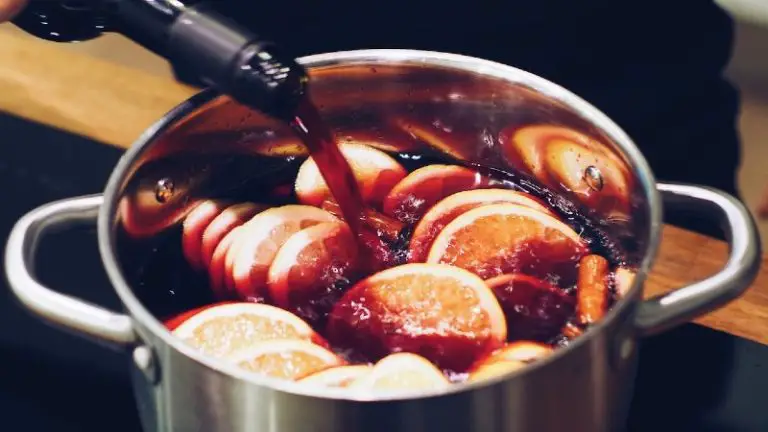A Sherry Tasting with Gonzalez Byass and The Oxford Wine Company
The Oxford Wine Company and Gonzalez Byass came together to create a sherry wine tasting event at The Snooty Fox Inn in Tetbury recently, and there I met Ellie Pym, the Business Development Manager for what is undoubtedly Britain’s most famous sherry brand. Founded in 1835 by Manuel Maria Gonzalez Angel in Jerez, in the province of Cadiz, the business assumed its new name in 1885 when it joined forced with the British wine agent Robert Byass. The Tio Pepe brand name was derived from the name of the uncle of the original founder.
Both Richard Walley, the Manager of the Tetbury branch of The Oxford Wine Company and Ellie described the changes that have taken place in public perception with regards to sherry: a fortified wine previously deemed unfashionable and “what you served granny” is now at the pinnacle of popularity. Supper clubs, trendy restaurants, wine bars and drink blogs have jumped onto the sherry love wagon, and it is interesting to note how many opportunities are now available for matching cheese, canapés, main courses and even puddings to sherry.
The evening highlighted both the history and the production of sherry, and we tasted four different courses accompanied by Tio Pepe Fino en Rama, Vina AB Dry Amontillado, Leonor Palo Cortado and Matusalem Oloroso Dulce.
The name “sherry” is thought to originate from the Arab word “sherish” and the town Jerez. The Moors conquered this part of the Iberian peninsula, after domination by both the Phoenicians, who established viticulture on its rich, clay and alluvial soils from 1100 BC onwards. The Romans also grew vines here during their rule from 200 BC onwards, but it was the Arabs who introduced distillation from 711 AD.
Sherry is a protected designation of origin fortified wine, and can only be produced within the sherry triangle that is formed by the three points of Jerez, Sanlucar de Barrameda and El Puerto de Santa Maria on the South West coast of Spain. Both the soil structure and the mild, temperate climate in this region lend themselves to the growing of the three main grape varieties that go to make up sherry. Rain falls mainly between October and May, summers are dry and hot and light levels are high for ripening the fruit
Palomino is the dominant grape used for the dry sherries, or finos. Approximately 90 per cent of the grapes grown for Sherry are Palomino grapes. Pedro Ximénez grapes are used to produce sweet wines. When harvested these grapes are typically dried in the sun for two days to concentrate their sugars.The Moscatelgrape variety is used similarly to Pedro Ximénez, but it is less common. The Palomino grapes are harvested in early September, and pressed lightly to extract the must. The must from the first pressing, the primera yema, is used to produce Fino and Manzanilla and the must from the second pressing, the segunda yema is used to make Oloroso. The product of additional pressings is used for lesser wines, distillation and vinegar. The must is then fermented in stainless steel vats producing a dry white wine with 11-12 percent alcohol content.
The fortified wine is stored in 500-litre oak casks that are filled five-sixths full, leaving “the space of two fists” empty at the top to allow flor, natural yeasts and bacteria with the appearance of white fluff, to develop on top of the wine.
Sherry is aged in the solera system where new wine is put into wine barrelss at the beginning of a series of three to nine barrels. A part of the wine in a barrel is moved into the next barrel down. At the end of the series only a portion of the final barrel is bottled and sold. Depending on the type of wine, the portion moved may be between five and thirty percent of each barrel.
The age of the youngest wine going into the bottle is determined by the number of barrels in the series, and every bottle contains a portion of much older wine. Sherry is aged in the solera system for a minimum of 3 years.
After fermentation, the wine is tasted and the first classification is performed. The casks are marked with the following symbols according to the potential of the wine:
/
A single stroke relates to a wine with the finest flavour and aroma, suitable for a Fino or Amontillado. These wines are fortified to 15% alcohol to allow the growth of flor layer.
//
A double stroke indicates a wine which will be allowed to develop further before determining whether to use the wine for Amontillado or Oloroso. These wines are fortified to 15% alcohol.
///
A triple stroke indicates a wine that has developed poorly, and will be distilled.
We tasted the Tio Pepe Fino en Rama sherry with a tapas plate of chorizo, olives and almonds. This is a raw and unfiltered sherry, straight from the barrel, 15% alcohol content, extremely dry and pale straw in colour. Its acidic slant cut straight through the richness and oiliness of the food, lingering on the palate with lemony notes.
Ellie told us how fino sherry is the drink for dieters – with less than 1 g of sugar per litre of liquid, it is very low in calories. She has travelled widely throughout the sherry region of Spain, and recounted how important sherry is as a party drink: to the Spaniards it is very important to serve sherry with food, and it is considered rude if little plates of tapas are not proffered with one’s aperitif.
With a starter of sardines, clams, baby squid and crab cake we enjoyed a glass of Dry Amontillado. Amontillado sherry is first aged under flor and is then exposed to oxygen, producing a sherry that is darker than a Fino but lighter than an Oloroso. It has quite a nutty, yeasty taste, and is served ice cold to juxtapose against the warm, salty taste of fish.
My favourite glass of the night was the Leonor Palo Cortado, served with a Cordero Moruno, a Moorish lamb recipe of lamb shoulder slow-cooked with cinnamon, sherry, raisins, cumin and almonds. The Palo Cortado is a mysterious and fine sherry initially aged like an Amontillado, typically for three or four years, but which subsequently develops a character closer to an Oloroso. This either happens by accident when the flor dies naturally, or is killed by fortification or filtration. Because this sherry spends more time in oak barrels it has a caramel, sesame taste, its texture is richer and it spreads around the palate with a velvety smoothness. It is the perfect foil against the rich, meatiness of the lamb and the fruity sweetness of the stew’s raisins.
With a crisp coated crema catalan for pudding, we tasted a Matusalem Oloroso Dulce {30 years old}. This sherry is made either by fermenting dried Pedro Ximénez (PX) or Moscatel grapes, which produce a rich, sweet dark brown wine, or by blending sweeter wines or grape must with a drier variety. The result is syrupy and fragrant, with a high viscosity and a sticky texture round the palate. With a sugar : liquid ratio of 360g sugar per 1 litre Ellie warned us it is definitely not a diet drink!
Further Information
Ellie Pym – Business Development Manager
Gonzalez Byass: www.gonzalezbyass.com
Tio Pepe: www.tiopepe.co.uk
Follow the team on Twitter: @TioPepeFino
The Oxford Wine Company : www.oxfordwine.co.uk
Follow the team on Twitter: @TheOxfordWineCo
The Snooty Fox Inn in Tetbury : www.snooty-fox.co.uk


